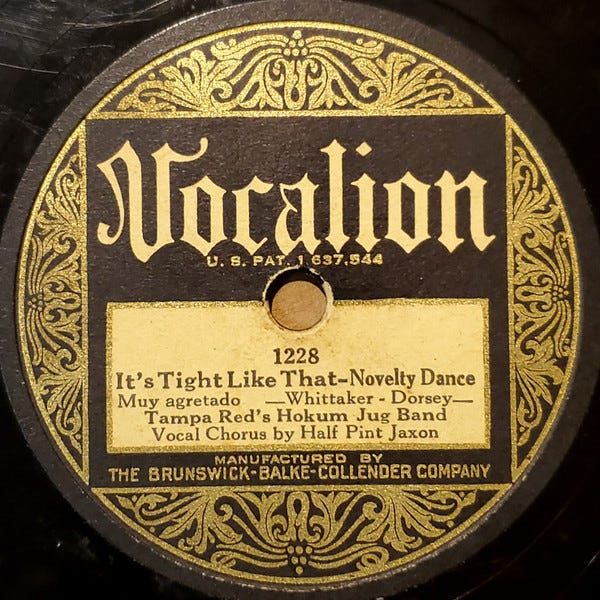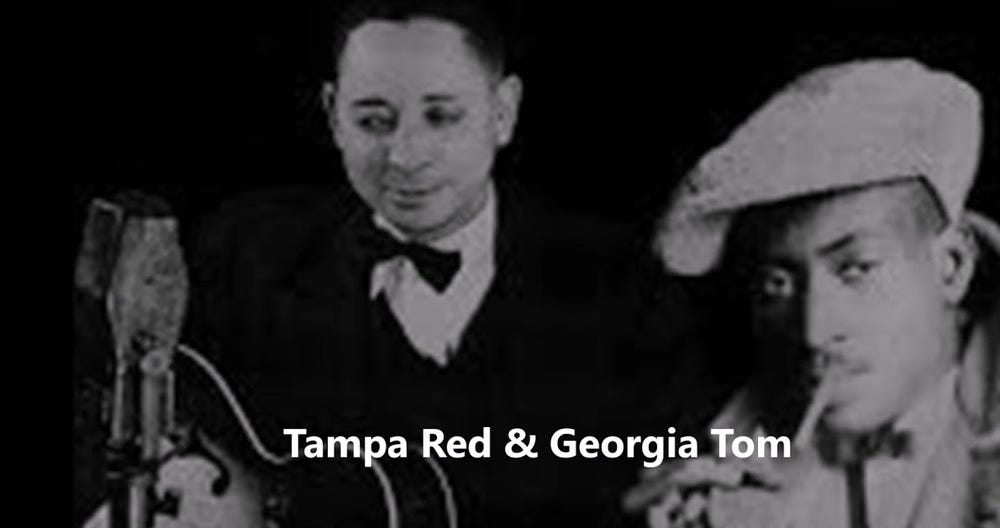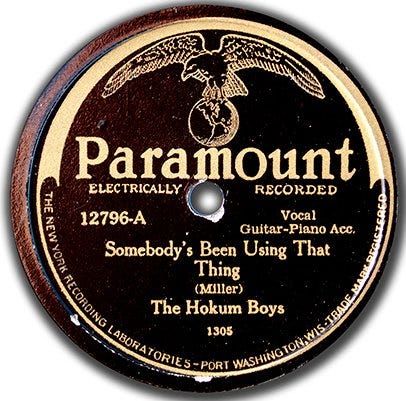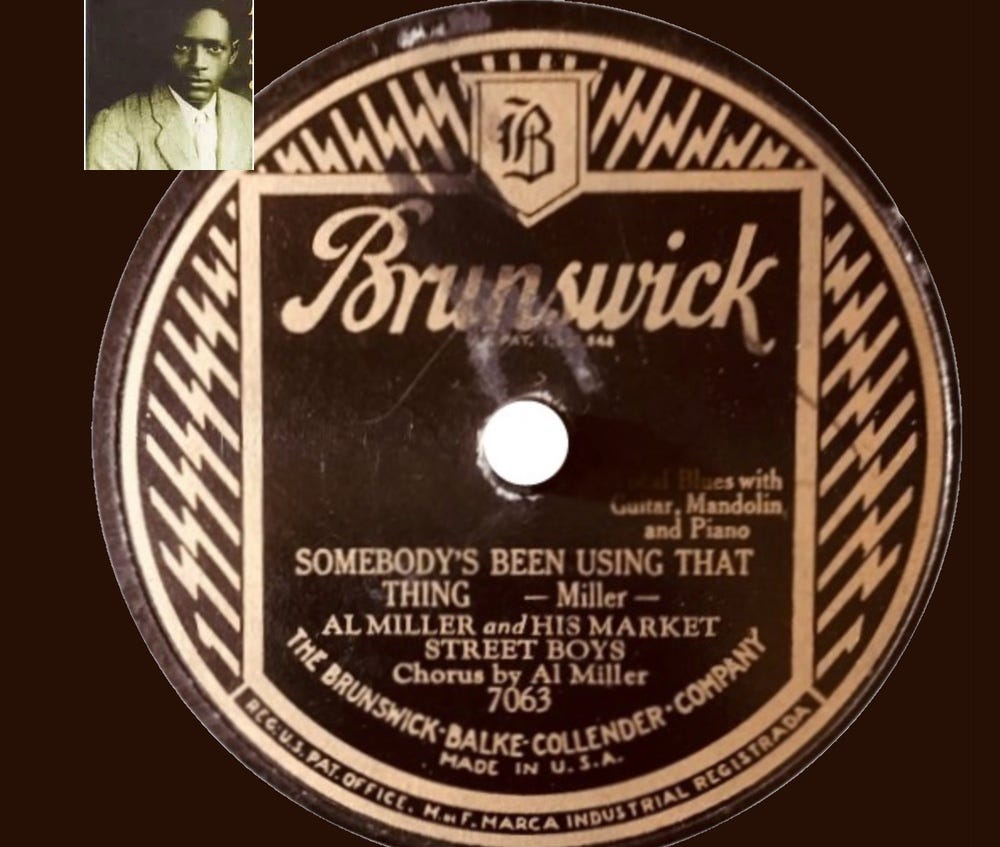The word hokum originated in vaudeville to mean a risqué performance laced with wordplay, euphemisms and double entendre.
When it appeared on the label of a 1928 hit for Vocalion Records by a new group called Tampa Red's Hokum Jug Band, the term rapidly entered the jazzy lexicon of The Roarin’ Twenties.
When the group moved on to Paramount Records as The Famous Hokum Boys, it quickly picked up imitators at other studios, often using variations on the same word in their own names. Eventually “hokum” came to describe an entire species of novelty tunes, all those sexy, silly blues of the 1920s and ’30s.
About Tampa Red
Hokum’s first star, Tampa Red, was one of the most prolific blues artists of his era, recording some 335 songs, 75 percent between 1928 and 1942.
Tampa Red was born Hudson Woodbridge in Smithville, Georgia, near Albany in the first decade of the 20th century. When their parents died, he and his older brother Eddie moved to Tampa, Florida, to be reared by their aunt and their grandmother. There he also adopted their surname, Whittaker.
Emulating Eddie, Hudson Whittaker played guitar around the Tampa area, especially inspired by an old street musician called Piccolo Pete, who taught the youngster his first blues licks.
After perfecting a slide guitar technique, he moved to Chicago in 1925 and began working as a street musician himself. He took the name "Tampa Red" to celebrate to his childhood home.
Enter Tom
Red’s big break came when he was hired to accompany established blues star Ma Rainey. There he also met pianist/composer Thomas A. Dorsey, who as working as “Georgia Tom.” Red and Tom became fast friends and music partners.
Tom introduced Red to records exec J. Mayo Williams, who arranged a studio session in 1928. Their first effort was a dud, but their next song — the cheeky “It’s Tight Like That” — became a national sensation, selling a million copies.
Red later recalled seeing people standing outside of record stores just waiting to buy the disc. Since the song was composed by both Red and Tom, they shared $4,000 in royalties from that single song. (That would be about $75,000 today.)
While his partnership with Dorsey ended in 1932, Red remained much in demand in recording studios throughout the ‘30s and ‘40s. He was later "rediscovered" in the blues revival of the late 1950s, along with other early blues artists, like Son House and Skip James. Red made his last recordings in 1960.
About the Song
Tampa Red recorded “Somebody’s Been Using That Thing” in 1934, but unlike so many of the tunes he waxxed, he didn’t write this one.
Instead, the song was composed and recorded five years earlier by a curious genre-blending mandolinist named Al Miller.
Starting in 1927, Miller played and sang in a style that combined elements of country, blues and jazz on sides for Black Patti records. His eclectic mix of sounds and material gave way to a heavy concentration on bawdry once he arrived at Brunswick for a series of recordings with his Market Street Boys.
Miller recorded his “Somebody’s Been Using That Thing” on March 8, 1929. It was his big seller. Five years later, after Tampa Red also scored with it, the song even started attracting the attention of artists in the fledgling country and western genre.
In 1937, for instance, Milton Brown, called by some “the father of Western swing,” did a rendition for Decca. The following year, The Callahan Brothers (Walter and Homer) of Madison County, Ky., recorded it on the Conqueror label.
Our Take on the Tune
If there's such a thing as a "standard" in jug band music, ”Somebody’s Been Using That Thing” is certainly one of them. While The Flood’s heroes recorded it 90 years ago, the band didn't get around to doing it until back in 2009 when Joe Dobbs recommended it.
That was right after he received a recording of it by our old buddy, Ed Light, and his DC-area band with one great name: The All New Genetically Altered Jug Band.
We’ve been Floodifying the tune ever since, as this track from a recent rehearsal demonstrates.





















